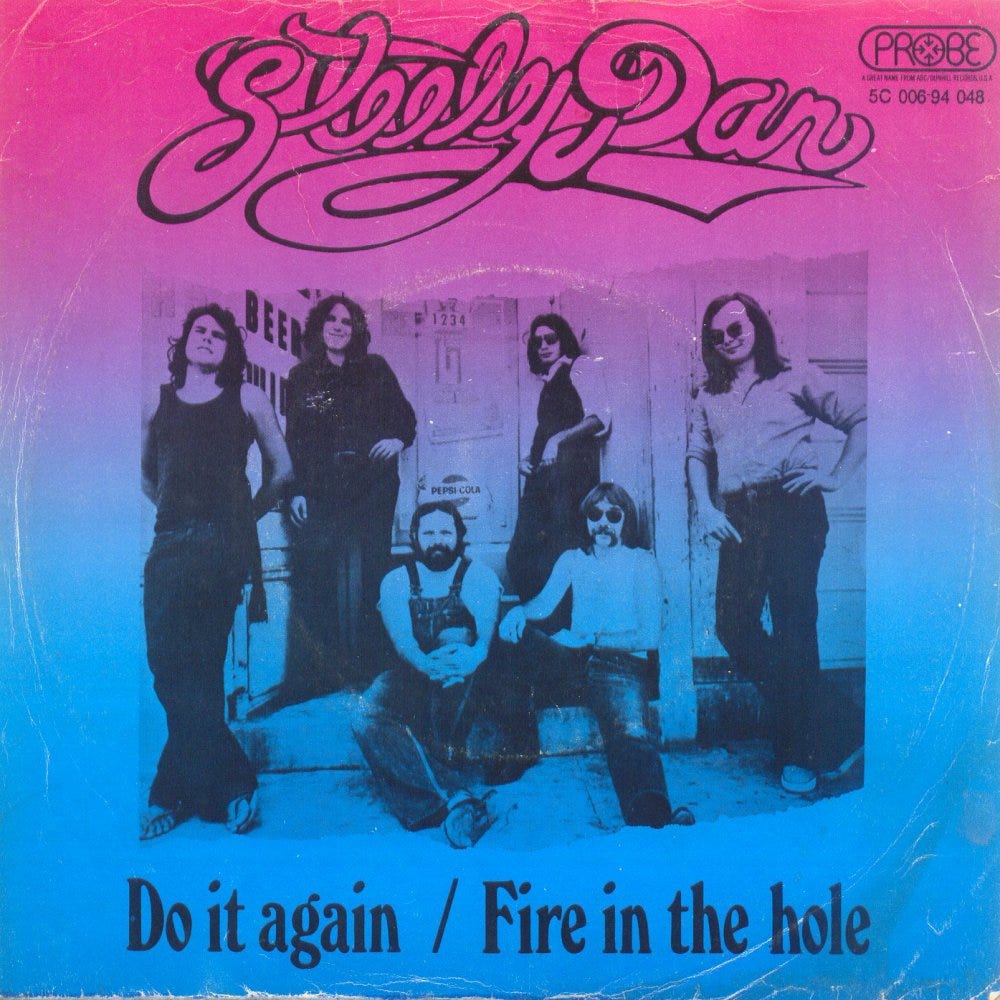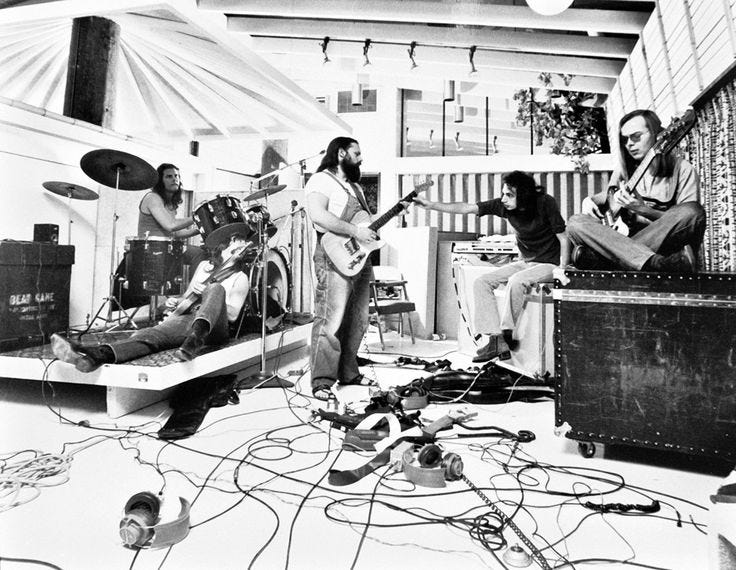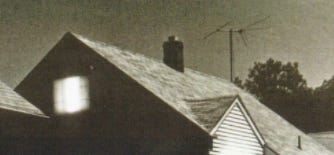Who Sang Lead on Do It Again Steely Dan

Steely Dan already had a very practiced conga player already in the band, guitarist Jeff "Skunk" Baxter worked percussion on this vocal in a live setting but Walter Becker and Donald Fagen thought it best to track in Feldman, an English session histrion famous for his piece of work on Miles Davis' '7 Steps to Heaven' LP.
Songwriters Becker and Fagen weren't ducking this twist, the get-go hit. The first song on Steely Dan's debut album, the beginning single off 'Can't Buy a Thrill.'
After the demoing years charged him with supplying the lines necessary for the listener to identify the more orthodox harmonic structures in the duo's driving songs, bassist Becker was finally freed to float with headphones on. Recorded within the months of earnest attempts to replace himself every bit his band's lead singer, Fagen lives confidently within his double-tracks.
Donald's not finished, if the temperature volition ever let him tune up. Somewhere in the middle of the song, but later the radio said "plenty," lurks a deliciously inappropriate "plastic" combo organ solo no dubiety egged on with Walter'due south snorting encouragement.
It's the type of musical instrument – never used again by the band – that would later sneer its style to great acclaim later in the 1970s, powering Elvis Costello's Attractions and other lightly lads. Here, on Side One (Track One), it's but a thing that sounds weird enough to be left on the side of the road afterward the carful was done with it.
Becker and Fagen spent the concluding fits of New York'due south 1960s in Park Slope trying to brand hire with pop tunes spun as earnestly as their souls at the time would let. They backed Jay and the Americans on live dates and were paid in whatever was left over after the beaks did their worst. Steely Dan was pulling down on calculated gambles long before Encino saved its thumbs from the freeze.
After moving to Los Angeles the pair scored a tune on a Streisand anthology, they considered Denny Doherty and they wrote for John Kay. Becker and Fagen penned and later even performed 'Change of the Guard' in full view of Dias and his rosary beads, stating that they intended it for release.
'Dallas,' a land-pop soft release single sung by the tawny yet contained Jim Hodder, the ring's drummer, was hesitantly considered as Steely Dan'south initial offering. David Palmer was brought in to striking the Laura Nyro notes and to look a little similar Roger Daltrey to the overserved.
Concessions were attempted, picks were rolled with. This was a duo that was not going to turn down subversively sporty cars (licenses had to come offset), interesting girlfriends, and meliorate gear – time to come accommodations had to exist considered, and swiftly.
And they led everything off with, I don't know, a bossa nova?
It's six minutes long and Donald Fagen sings it with that voice and it'southward a massive hit. If the admitted aesthete to launch for was midway between Give-and-take Jazz and Safety Soul, then the Dan was well on its way.
The tagger at this point reads only in the 1970s! and information technology's a osculation-off that I've listened to Becker, Fagen and Baxter all conclude with. To calm insistent interviewers and re-charm themselves at the wickedness of how wondrously daffy it is that a song like this could go a nautical chart-topper in 1972.
When anyone else of a certain age spits that line out, it falls a little flatter in its nod to an imagined decade where Richard Dreyfuss was the only male person sexual activity symbol, where One thousand Funk never happened.
Like, at some bespeak it's got to become a Steely Dan matter, correct? It'due south non as if the rest of the top ten was filled with this strain of slyly-sung succor.
Denny Dias' hands until recently had been playing a Barney Kessel-styled jazzbo log, the sort of wood y'all could endanger a Tiger Stadium transformer with. Dissatisfied with the setup, "an offense to eyes and ears alike," Becker and Fagen peeled off enough advance to outfit Denny with a Telecaster and Marshall half-stack aimed at didactics jazz slides to the previously unaware.
Before Denny could play with his new toys, though, Becker and Fagen decided to strap him to a Coral Electric Sitar.
Not to be cool, that would have worked better in 1967.
Non to exist accurate, because this vocal is a bossa nova, and that musical instrument doesn't sound the least scrap similar a sitar.
Not because it would be easy, because electric sitars are incommunicable to set upwardly and fifty-fifty tougher to tape, only shitty AM radio producers have the patience for their typical sonic output.
And not because Denny Dias, otherwise confident in both his abandoned studies and the Billy Bauer Technique, had ever played an electrical sitar in his life. Kustom payback for the guy that understood Becker and Fagen's changes better than anyone in the store.
The handle spun cherries. In an era where sonic enhancement just meant stacking more speaker cones on top of the terminal ones y'all bought, Becker and Fagen knew when to leave the table.
It but lays downward the scent, doesn't it? Have a listen:
Jeffrey Baxter self-identifies as "Skunk" after a couple of skilful runs to begin the tune, giving his baffle less than a minute before saluting Chuck Berry. You're never too far away from some spiny vibrato from this guy, Skunk unremarkably won't let upwardly until you get out the room and luckily it took Donald and Walter a few years to correctly read the joint.
Dias' solo is astonishing, and it would accept been comparatively lost on his new Dan Armstrong or his newer, eventually humbucker-outfitted, Telecaster. It would take been mush on the Kessel guitar, and 1972 wasn't confident enough to tape a Les Paul or ES-335 in a way that didn't track as tacky to Don and Walt's, and so you're left with what's hanging around the store.
You don't hear those notes on anything but an electrical sitar, and I don't know if you'd call what comes out of Fagen's Yamaha organ notes.
We're ane song in and Donald'southward already clapping dorsum to seventh grade, winter break, and whatever spacey sounds he could hear from the TV in the other room. 
The song is Traditional, an expert takedown past 2 guys that shouldn't know better, but do. Becker and Fagen were somehow advanced experience, slid underneath the door at night when the air was thick with shit pot and, we're told, calamine lotion.
The lyric would become a Steely Dan staple. An unhurried presentation, delivered by two guys who really want to go out of there.
Miniaturization can give you the bends, and that'south where a partner comes in. Someone to tell you that a character named 'Jack' – a weakass hotel allonym given in lieu of this desperate, picayune man'south actual proper noun – is the way to get.
When you submit the draft with confidence, you're immune to claim credit to a playing bill of fare all your own. This is what separates Donald Fagen and Walter Becker from the sorts of people that desire to write in the voice of Oliver Barrett IV, or the Dalton Gang.
Debut track. It'southward growing.
garrisonwhats1973.blogspot.com
Source: https://tsa.substack.com/p/every-steely-dan-song-do-it-again
0 Response to "Who Sang Lead on Do It Again Steely Dan"
Post a Comment